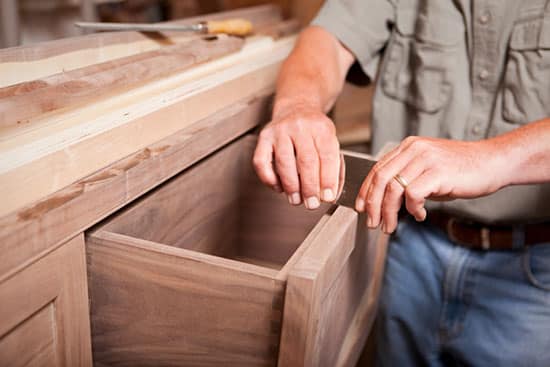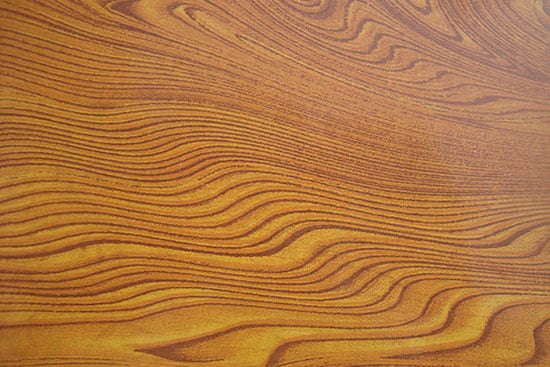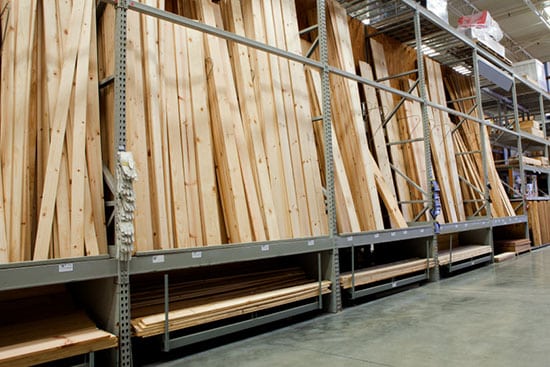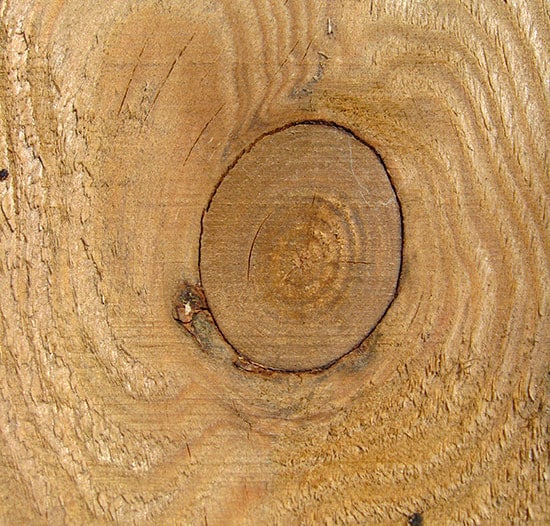Selecting the Right Wood for Your Project
 Building a house, crafting a piece of furniture, or installing flooring? Regardless of the project, you will face the same question: What kind of wood should I use?
Building a house, crafting a piece of furniture, or installing flooring? Regardless of the project, you will face the same question: What kind of wood should I use?
With so many different types of wood available, each with its unique characteristics, you may be trying to determine what is best for your project. The purpose of this guide is to give you clarity and help you make an informed decision.
We’ll explore:
- Types of wood
- Characteristics of wood
- Factors to consider when selecting wood
- Choosing the right wood for your project
Let’s get into it.
Types of Wood
There are two main categories of wood: hardwoods and softwoods.
The difference? One of the main ones is that hardwoods come from deciduous trees, characterized by their broad leaves, while softwoods come from evergreen trees, which have needles instead of leaves.
In general, hardwoods are true to their name—they are denser (harder) and stronger than softwoods. These qualities make them ideal for furniture making and other applications that require durability and strength.
Here are some of the most popular species of hardwoods:
- Oak—a strong, durable wood used for flooring, furniture, and cabinetry
- Maple—a wood with a uniform grain and light color, common in furniture and flooring
- Mahogany—a wood prized for its rich, reddish-brown color and used for high-end furniture and cabinetry
- Walnut—a deep, rich wood used for furniture, cabinetry, and decorative accents
- Cherry—a wood often used for furniture because of its warm, reddish-brown color
Another type of wood woodworkers and flooring professionals like to use but not as common as others is, madrone wood.
And what about softwoods?
Due to being less expensive and more abundant than hardwoods, they are common in construction, wood products, and other applications.
Examples include:
- Pine—a wood with a light color and distinctive grain, often used for framing and other structural applications
- Cedar—naturally resistant to decay and insects, this wood is perfect for outdoor projects like decking or siding
- Spruce and fir—common options for framing and structural applications
- Redwood—a softwood prized for its natural beauty and durability and popular for decking and outdoor furniture
And whether hardwood or softwood, each species of wood has unique characteristics. Let’s take a look at some of those next.
Characteristics of Wood
 The characteristics of various wood species can affect their strength, durability, and appearance. And ultimately, these determine the use of the wood.
The characteristics of various wood species can affect their strength, durability, and appearance. And ultimately, these determine the use of the wood.
But first, a few definitions:
Strength refers to the ability of the wood to withstand weight and pressure, while density is the weight of the wood per unit of volume.
And appearance involves many factors, such as grain pattern, color, and texture.
Here are examples of those qualities in some of the wood species we’ve discussed:
- Oak—pronounced grain pattern, strength, and durability
- Maple—uniform grain, light color
- Mahogany—rich, reddish-brown color
- Walnut—deep, rich color and a distinctive grain pattern
- Pine—light color, distinctive grain pattern
- Cedar—reddish-brown color, fine grain
- Spruce and fir—straight grain, light color
- Redwood—reddish-brown color, unique grain pattern
And these characteristics affect their applications.
For example, people often choose strong, durable wood with depth of color for hardwood flooring since appearance matters a lot. On the other hand, construction workers use lighter wood—pine, spruce, and fir—for framing.
So, how do you know what’s right for your project? Next, we’ll look at some important considerations.
Factors to Consider When Selecting Wood
When selecting wood for your project, you’ll want to consider these five factors:
- Budget
- Aesthetics
- Durability
- Environmental concerns
- Availability
A little more on each one below.
1. Budget
Different types of wood come with varying price tags. Softwoods, like pine and cedar, are typically more affordable because they grow faster than hardwoods. They are suitable for beginners or those who want to keep costs low.
On the other hand, hardwoods like oak and maple are more expensive but can offer higher quality and durability for certain projects.
Keep in mind that the cost of wood isn’t limited to its initial purchase price. Different wood species may require specialized tools, fasteners, or finishes, which can add to the overall project cost. However, more expensive wood types might last longer, requiring less maintenance or replacement over time.
Weigh these factors against your budget and consider the long-term investment when choosing wood.
2. Aesthetics
The type of wood you choose impacts the overall look of your project. Think about how the grain pattern, color, and texture of the wood will complement the design style of your project.
Each wood species has unique characteristics, such as grain patterns, knots, color variations, and figure. Some wood species, like curly maple or burled walnut, have striking patterns.
You’ll also want to find out how your wood ages, as some species may darken or change color over time.
3. Durability
Durability is a crucial factor because your wood must be able to withstand its intended environment and usage. Softwoods may not be ideal for applications where high wear and tear are expected, such as flooring. On the other hand, hardwoods like oak and maple offer better resistance to daily use.
If your project involves outdoor furniture or decking, choose wood types that are naturally resistant to rot, decay, and insect damage, such as cedar, redwood, or pressure-treated lumber.
The hardness of wood, often measured by the Janka scale, can also influence its durability. Woods with a higher Janka rating, like hickory or Brazilian cherry, are more resistant to dents and scratches.
And finally, when choosing wood for projects like countertops or cutting boards, consider its resistance to abrasion and impact, as well as its resistance to moisture and temperature changes.
4. Environmental concerns
When you can, opt for wood sourced from sustainably managed forests, which prioritize ecological balance and biodiversity.
Look for certifications like the Forest Stewardship Council (FSC) or Programme for the Endorsement of Forest Certification (PEFC) to ensure that the wood you’re using comes from responsible sources. You may also want to consider reclaimed or recycled wood, which can help reduce waste and the demand for new resources.
If you can get the wood local, even better—that way you’ll be reducing transportation emissions.
One other factor to consider is the lifecycle of your project and its end-of-life disposal. Some woods, like cedar or redwood, contain natural preservatives and can be composted or repurposed more easily than chemically treated woods.
5. Availability
 Some wood types may be more difficult to find or only available in specific regions, particularly exotic varieties like teak or certain types of mahogany.
Some wood types may be more difficult to find or only available in specific regions, particularly exotic varieties like teak or certain types of mahogany.
Sourcing wood could affect your project timeline, so provide yourself with plenty of lead time when sourcing a specific species.
If you select a less common wood, you may face challenges sourcing additional materials for future projects or repairs. Furthermore, ordering wood from distant locations can increase shipping and transportation costs, which could impact your overall budget.
With these five considerations in mind, it’s time to walk through choosing your wood.
Choosing the Right Wood for Your Project
You’re geared with an understanding of the types of wood, their characteristics, and various factors to consider. You’ve done your research and consulted experts. Now, it’s time to make your decision and purchase.
Remember, though, that not all wood is created equal, even within the same species. You’ll still need to inspect the wood you’re considering and ask questions about its origin and processing. For example, oak can vary in strength, color, and grain pattern depending on where it’s grown, how it’s harvested, and how it’s processed.

Here are some steps that will help you in selecting and purchasing wood:
- Consider the intended use of your wood. Construction? Furniture making? Decking? Indoor or outdoor use?
- Identify the type of wood that is best suited for your project. Softwood or hardwood?
- Determine the specific characteristics you’re looking for, such as grain pattern, color, and texture. A consistent color and grain pattern is important if you want a uniform look for your project.
- Determine your budget and compare the cost of different types of wood.
- Evaluate the sustainability and environmental impact of the wood.
- Inspect the wood for defects, such as knots, cracks, and warping.
- Ask questions about the wood’s origin, processing, and any special considerations for its use.
- Bring a wood moisture meter with you and check whether the wood has a moisture content close to that of its intended environment. Otherwise, you may have to wait for it to dry or acclimate.
Following these general guidelines will set you on your way to choosing a wood suitable for your project.
See Wood Selection as a Learning Process
Selecting the right type of wood may feel like a daunting task. You may even think the success or failure of your project depends on the type of wood you choose.
But that isn’t the case.
Many different types of wood can work in various applications. If you’re just starting, you may have to experiment with the types you prefer for your projects. And that’s okay. That’s how you’ll gain experience.
But with these guidelines, you’ll be on your way to making those decisions with confidence. Rather than stressing over the process, you’ll enjoy it and see it as a learning opportunity.
That way, you’ll enjoy woodworking more too.
Understanding the nuances between sapwood and heartwood is crucial for anyone working with wood. Delve into our detailed piece, ‘Sapwood and Heartwood – What Are The Differences,’ to enhance your selection process and ensure the success of your woodworking endeavors.

Wagner Meters is a family-owned American business that aims to provide solutions in moisture measurement technology that will enhance the quality and value of each customer’s project. With an almost 60-year legacy of innovation, Wagner continues to be a resource for both individual craftsmen and high-performance commercial endeavors.
Last updated on October 8th, 2024




Choosing the appropriate wood for a project is essential for ensuring structural integrity, durability, and aesthetic appeal. Factors such as wood species, grade, and moisture content should be considered.